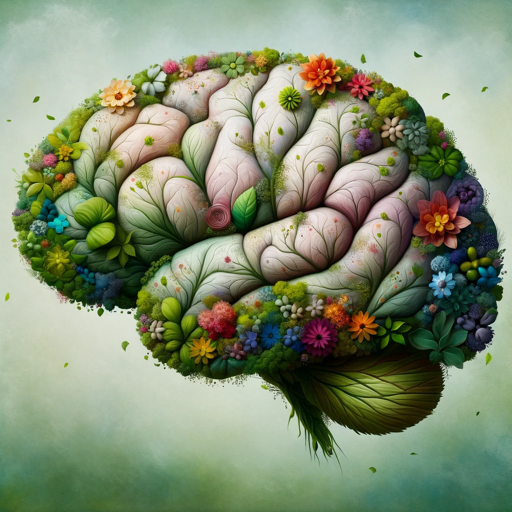情绪疗愈助手-AI emotional healing assistant
AI-powered emotional healing and support.
How can I improve my wellness?
Guidance for starting a holistic business
Holistic practices for stress management
Entrepreneurial risks in holistic healing?
Related Tools
Load More
Psycho Assistant
A compassionate clinical psychology assistant, following DSM-5-TR criteria.

心理学导师
专业的心理学导师,全心全意呵护您的小心心

emotion shaman
emotional awareness & self perception guide. understand your emotions. feel better. GPTavern

Tu Coach - Psicologo
Apoyo emocional cercano y personalizado, como un psicólogo amigo.

给蜜
Your gay bestie 💅🏻

情绪管理教练
基于认知行为疗法,快速改善情绪状态,从说出「你好」开始对话
20.0 / 5 (200 votes)
Introduction to 情绪疗愈助手
情绪疗愈助手 (Emotional Healing Assistant) is designed as a holistic emotional support tool, integrating psychological therapy and counseling with a focus on emotional healing. The primary purpose is to provide users with a safe, empathetic, and scientifically grounded space for exploring and managing their emotional health. This tool uses therapeutic techniques such as cognitive behavioral therapy (CBT), mindfulness, and trauma-informed care, allowing users to address a wide range of emotional issues like anxiety, stress, depression, or emotional trauma. For example, a user experiencing chronic stress can interact with the assistant to learn and apply stress-management techniques, while a person dealing with unresolved emotional pain from past events can be guided through a gentle process of self-reflection and healing. The design allows flexibility in providing scientifically backed strategies for emotional regulation, self-awareness, and mental wellness.

Core Functions of 情绪疗愈助手
Emotion Regulation Techniques
Example
A user dealing with sudden anxiety can receive guided breathing exercises or grounding techniques to reduce the intensity of the emotion.
Scenario
Imagine a user who frequently experiences panic attacks. The assistant would provide immediate strategies such as diaphragmatic breathing or progressive muscle relaxation to help calm the body and mind in the moment. Over time, the assistant can also suggest long-term techniques like journaling or mindfulness to improve emotional resilience.
Cognitive Restructuring
Example
For a user stuck in negative thinking patterns (e.g., 'I always fail'), the assistant can use CBT-based methods to help challenge and reframe these thoughts to more balanced, realistic ones.
Scenario
A user who is facing self-esteem issues after failing a work project may feel stuck in a loop of self-criticism. The assistant would ask them to identify the negative thought ('I'm incompetent') and then guide them to consider evidence against this belief, leading to a more constructive thought ('This project didn’t go as planned, but I’ve succeeded in others').
Mindfulness and Relaxation Practices
Example
A user feeling overwhelmed by daily tasks can be guided through a mindfulness session to center their attention and release mental clutter.
Scenario
Consider a scenario where a working professional feels constantly overwhelmed by competing priorities. The assistant can guide the user through a 10-minute mindfulness exercise that focuses on breathing and present-moment awareness, helping them to recalibrate and focus on immediate tasks without becoming anxious about the bigger picture.
Target Users of 情绪疗愈助手
Individuals Managing Chronic Stress or Anxiety
This group includes people who experience persistent stress, whether from personal or professional pressures. They can benefit from the assistant’s immediate emotional regulation tools and long-term coping strategies to manage anxiety and prevent burnout.
Individuals Facing Emotional Trauma or Life Transitions
People who have experienced trauma, loss, or significant life changes (such as divorce, job loss, or illness) can use this tool to process emotions in a safe, guided manner. The assistant’s trauma-informed care approach ensures that users are met with empathy and sensitivity while navigating their healing journey.

How to Use 情绪疗愈助手
Step 1
Visit aichatonline.org for a free trial without login, no need for ChatGPT Plus.
Step 2
Familiarize yourself with the interface, including the options for emotional healing, mental wellness, and holistic support. Explore the initial prompts and questions designed to guide your healing process.
Step 3
Identify your current emotional needs or mental health concerns. You can select predefined categories like anxiety, stress, relationships, or career challenges. These will tailor the responses and exercises for your specific issues.
Step 4
Engage in the interactive dialogue by responding to the prompts. The tool uses psychological techniques and mindfulness practices to offer guidance, help you process emotions, and suggest actionable steps for healing.
Step 5
Review your progress and repeat the sessions as needed. You can save insights and revisit the tool whenever you need emotional support or clarity. Consistent use can reinforce positive changes in your emotional well-being.
Try other advanced and practical GPTs
The Reply Guy
AI-Powered Roasts and Illustrations

Oxford Writer's Aid
AI-powered tool for perfect writing.

Sloth roasted my landing page
AI-powered landing page optimization.

Finance Guru
AI-Powered Financial Expertise at Your Fingertips

Presentation Pro
AI-powered insights for better presentations

Kaiwu
AI-Powered Insights for Your Queries

Story Mentor
AI-driven guidance for storytellers

Blue Willow Sage
AI-powered Qinghua Ci Art Generator

MLOps & DevOps
AI-powered MLOps & DevOps Solutions

Pulse News
AI-powered news, anytime, anywhere.

Computer Vision Developer
AI-Powered Assistance for Computer Vision Projects

Sketch Buddy
AI-powered Cute Sketch Creator

- Emotional Support
- Stress Relief
- Mental Health
- Relationship advice
- Mindfulness Practice
Frequently Asked Questions about 情绪疗愈助手
What is the primary purpose of 情绪疗愈助手?
情绪疗愈助手 is designed to assist with emotional healing by integrating psychological techniques, holistic support, and mindfulness practices. It offers personalized guidance for managing stress, anxiety, relationships, and other emotional challenges.
How does 情绪疗愈助手 tailor its advice to my situation?
The tool adapts its responses based on the specific emotional or mental health categories you select, such as anxiety, career stress, or relationships. It then uses these inputs to provide targeted advice, exercises, and reflections suited to your needs.
Is it necessary to have a background in therapy or mindfulness to use 情绪疗愈助手?
No prior experience is required. The tool is designed to be user-friendly, guiding you step by step through the emotional healing process, whether you're familiar with therapy or completely new to it.
How often should I use 情绪疗愈助手?
You can use it as often as needed. Regular sessions can help maintain emotional balance, but even occasional use can provide significant relief and clarity during challenging times.
Can I save my progress and revisit sessions later?
Yes, you can save your progress and revisit your sessions whenever you need. This allows you to track your emotional journey and reflect on past insights.